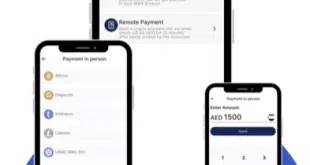As I start working on this month’s column, three news stories are flickering on my screen. One is about major banks using blockchain technology to move non-monetary, high-value, high-security documents and intellectual property.
The second article is about more major retail chains piling on to sue MasterCard and Visa over non-PIN chip card fraud (does this war ever end?).
The third follows a Wall Street Journal headline, “Fintech Startup Craves More Bank Regulation,” with several subsequent items about the effort of Circle, one of the larger digital-payments companies, to get itself put under a regulatory regime, something it sees as necessary for its yet-to-be-achieved success, despite the digirati’s dirge that all regulation is bad.
How fast do things really change in the world of payments? Certainly, the pace at which new ideas are introduced is fast. Regularly, we hear of new ways of doing payments being invented, funded, or opened for business. One publication estimates there are dozens of fintech companies currently in limbo between recent launch and either the rare success or the more frequent shutdown.
While picking winners is a dangerous gamble, developing strategic plans requires having an evidence-based idea of how long it may take the eventual winners to become widely adopted and at what point a new player in the payments world will permanently divert a noticeable amount of revenue from banks and credit unions.
Is there a normal or usual length of time from initial invention to the point where a new payments method becomes a well-established business? A careful look seems to reveal that if there is, it might be much longer than many of us probably think it is.
Take the still-not-settled matter of chip cards in the U.S. Hanging on my wall is the patent issued to a startup where I once worked for using a micro-chip embedded in a plastic card to make payments more securely. The patent issue date is 1979. The first test with a few thousand cards was in 1986. Using 2014 as a date for the broad introduction of chip cards in the U.S., we get a total 35-year span. And that’s for a technology invented by a U.S.-based company that was already in the payments-automation business working closely with all three major U.S. card schemes.
Most of us would agree that PayPal is a successful, well-established payments method that is somewhat profitable (a condition that I would argue is essential to being counted as having arrived). What was the span of time from its founding to profitability? Although the calculation is somewhat tangled by the period of ownership by eBay, PayPal went public in 2015 soon after becoming profitable in accounting terms, a span of 17 years from its founding.
How about blockchain payments? Bitcoin’s date of invention had to have been some time before its 2008 public announcement. Eight years later, a few major banks are experimenting with it, but with no decision yet to launch a payments product using blockchain. Assuming another 10 years until it could become widely distributed for commercial transactions, we get a relatively fast 18 years. But the time from there to widespread consumer use could easily be another five to 10 years. Assuming seven years, that pushes the invention-to-arrival span to 25 years.
The message from looking at such examples is that, with only a few exceptions, the span from founding to profitability is far from anything that would justify the near panic in the traditional payments community that we see with each new “disruptor” announcement.
This typical 25-year span from invention to profit shouldn’t be seen as a reason to stay uninvolved with new payments ideas. But it does provide us with room to employ well-developed, evidence-based strategic planning methods that can guide banks and credit unions along a path to successfully compete with—or incorporate—the few surviving inventions.
Ignoring new payments technologies is foolish. But the long view shows that rushing to the front of the pack should be undertaken only with a gimlet eye on both the likelihood of product acceptance and the long-term financials, and only if you can afford to wait 20 to 25 years for the payoff.
In the payments business, the long view is almost always the most successful approach.
—George Warfel • gwarfel@wespay.org




